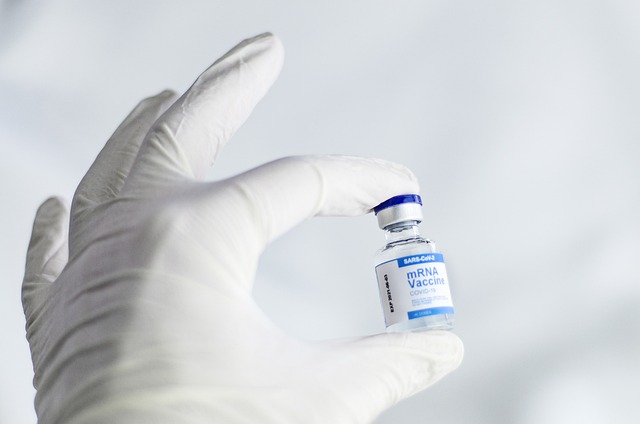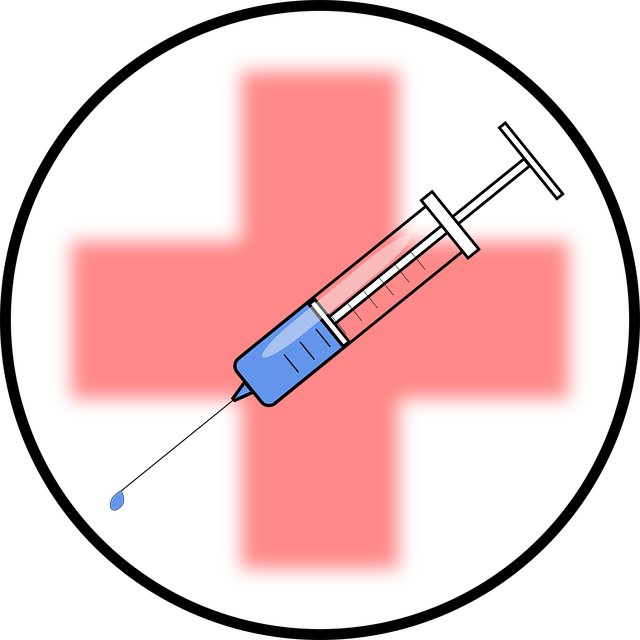The UK's healthcare system recognizes the critical importance of ensuring that Vaccine Information Sheets (VIS) are accessible to all patients, regardless of language barriers. Translation services for Vaccine Information Sheets UK play a vital role in this regard, adapting these documents into numerous languages to inform patients about vaccine benefits, side effects, and contraindications. The translations must be both accurate and culturally sensitive to effectively communicate complex medical information and support informed decision-making among diverse communities. Professional translation services specializing in medical terminology are employed to maintain the integrity of the original content while considering the linguistic and cultural contexts of different patient groups. This ensures that healthcare providers can effectively communicate with non-English speakers, thereby promoting health equity, facilitating informed vaccine uptake, and upholding the UK's commitment to inclusive patient care. The process involves a careful selection of translators who are not only linguistically proficient but also well-versed in healthcare lexicon, adhering to UK regulatory standards like those from the MHRA, to deliver VIS that align with UK medical communication protocols and effectively convey essential vaccine information.
Navigating the complexities of healthcare, particularly within multilingual communities, necessitates clear and precise communication. This article delves into the efficacy of vaccine information sheets as translated by professional translation services in the UK, highlighting their critical role in public health education. We explore the nuances of translating these essential documents to ensure they convey accurate, understandable, and actionable guidance for patients. The discourse encompasses an overview of vaccine information sheets, the importance of translation services within the UK’s diverse linguistic landscape, a comparative analysis of original and translated materials, the challenges faced in achieving clinical accuracy, the evaluation of translations’ effectiveness in patient comprehension, and best practices for optimal translation. This scrutiny aims to ascertain how well vaccine information sheets, as rendered by translation services, inform and protect UK patients.
- Overview of Vaccine Information Sheets and Their Importance in the UK
- The Role of Translation Services for Multilingual Communities in the UK
- Comparative Analysis: Original vs. Translated Vaccine Information Sheets
- Challenges in Translating Vaccine Information Sheets for Clinical Accuracy
- Evaluating the Effectiveness of Translation Services for Patient Comprehension
- Best Practices and Recommendations for Translating Vaccine Information Sheets in the UK
Overview of Vaccine Information Sheets and Their Importance in the UK

Vaccine Information Sheets (VIS) are critical resources provided to patients, offering detailed information about vaccines, their benefits, potential side effects, and contraindications. In the context of the UK, where a diverse population with varied language proficiencies resides, the relevance of these sheets extends beyond mere medical advice; they serve as a bridge between healthcare providers and patients who may not be fluent in English. The UK’s commitment to patient safety and informed consent is underscored by the availability of translation services for Vaccine Information Sheets. These translations play a pivotal role in ensuring that all individuals, regardless of their linguistic background, can understand the risks, benefits, and procedural aspects of vaccination. The accuracy and cultural appropriateness of these translations are paramount, as they directly impact patient comprehension and decision-making. Healthcare organisations across the UK collaborate with professional translation services to adapt VIS content into multiple languages, thereby upholding the principle of equity in healthcare and fostering informed vaccination uptake among diverse communities. This commitment to clear communication underscores the UK’s dedication to patient care and public health initiatives.
The Role of Translation Services for Multilingual Communities in the UK

In the United Kingdom, a mosaic of cultures and languages coalesce to form a vibrant society. Within this context, the provision of clear and accurate information is paramount, especially when it pertains to health and medical interventions such as vaccines. Translation services for Vaccine Information Sheets (VIS) play a pivotal role in ensuring that multilingual communities have access to critical health information in their native languages. These services are not merely a matter of linguistic convenience but an essential component of patient safety and informed consent. They enable healthcare providers to communicate effectively with patients who may not be fluent in English, thereby reducing misunderstandings and potentially harmful outcomes. The accuracy and cultural appropriateness of translations are of utmost importance; professional translation services specializing in medical terminology are best equipped to deliver this level of precision, ensuring that the VIS convey the same meaning and nuance as their English counterparts. This commitment to inclusive communication is a testament to the UK’s dedication to equitable healthcare for all residents, regardless of linguistic background. As the UK continues to navigate global health challenges, the role of these translation services in providing accessible and understandable vaccine information underscores their significance in public health initiatives.
Comparative Analysis: Original vs. Translated Vaccine Information Sheets

The translation of Vaccine Information Sheets (VIS) from their original language into English for use in the UK presents unique challenges that can impact patient understanding and compliance. A comparative analysis between the original and translated VIS reveals both successes and areas for improvement in the translation services employed. The accuracy and clarity of translations are paramount; any discrepancies or mistranslations could lead to misinformed decisions by patients, potentially compromising vaccine uptake and public health outcomes. It is essential that the nuances within the medical terminology and the cultural context in which the information is presented are accurately conveyed. Translation services for Vaccine Information Sheets UK must not only be linguistically precise but also sensitive to the diverse demographics of the UK population, ensuring that all patients, regardless of their first language, can comprehend the critical information regarding vaccine safety, efficacy, and side effects. The process involves more than mere word-for-word translation; it necessitates a deep understanding of both the source and target languages, as well as medical terminology, to ensure that the VIS in English remains an effective tool for patient education and informed consent.
Challenges in Translating Vaccine Information Sheets for Clinical Accuracy

The translation of Vaccine Information Sheets (VIS) into languages spoken by UK patients presents a complex array of challenges that must be navigated to maintain clinical accuracy and ensure patient safety. Language translation services face the daunting task of accurately conveying critical medical information that is often dense with technical terms and medical jargon. The stakes are particularly high for VIS, as they contain vital details about vaccine ingredients, potential side effects, contraindications, and administration protocols. A literal translation without cultural and linguistic nuances can lead to misinterpretation or omission of important safety information, potentially compromising patient care.
To address these challenges, translation services must employ a team of skilled translators who are not only proficient in the target language but also have a solid grasp of medical terminology. They should work in tandem with healthcare professionals to ensure that all translated content is contextually accurate and suitable for the intended audience. This collaborative approach can mitigate the risk of mistranslation and ensure that the nuances of clinical language are preserved across different languages, thereby supporting informed decision-making by UK patients from diverse linguistic backgrounds.
Evaluating the Effectiveness of Translation Services for Patient Comprehension

When vaccines are introduced or updated, it is imperative that the information provided on Vaccine Information Sheets (VIS) is accessible and understandable to all patients, including those who speak English as an additional language. The effectiveness of translation services for these critical documents directly impacts patient comprehension and informed consent. In the UK, a diverse population necessitates that VIS are not only accurately translated but also consider cultural nuances and health literacy levels. Translation services for Vaccine Information Sheets in the UK must adhere to high standards of precision and relevance to ensure that key information about vaccine side effects, contraindications, and administration details is conveyed correctly. This includes not only the direct translation of terms but also the adaptation of medical jargon into layman’s language that is suitable for the target audience’s level of health literacy.
To evaluate the effectiveness of these translation services, healthcare providers must assess both the linguistic accuracy and the cultural appropriateness of the translations. This can be achieved through patient feedback, surveys, and possibly a pilot program where a subset of patients receive the translated VIS before a full rollout. The goal is to ensure that patients from diverse linguistic backgrounds receive information that is as clear and understandable as it is for monolingual English-speaking patients. This not only enhances patient safety but also fosters trust in healthcare providers and the vaccination programmes themselves, ultimately contributing to higher vaccination rates and better public health outcomes.
Best Practices and Recommendations for Translating Vaccine Information Sheets in the UK

When adapting vaccine information sheets for UK patients, it is imperative to employ translation services that are specialized in medical terminology and have a proficient understanding of the local context. The process begins with selecting translators who are not only linguistically adept but also possess a thorough grasp of healthcare-related lexicon. This ensures that the complex information present on Vaccine Information Sheets (VIS) is accurately conveyed, maintaining the integrity and precision of the original content.
Best practices in this translation endeavor include a meticulous approach to terminology alignment, cultural nuances, and regulatory requirements. The translation services should employ bilingual subject matter experts who can validate the translated content against the source material. Furthermore, these translators must be familiar with UK-specific guidelines and recommendations, such as those provided by the Medicines and Healthcare products Regulatory Agency (MHRA). This step is crucial to guarantee that the VIS adheres to UK standards and effectively communicates critical information, including potential side effects, contraindications, and administration instructions, to patients from diverse linguistic backgrounds.
The examination of vaccine information sheets within the UK’s multilingual context reveals a critical need for effective translation services. This study underscores the importance of accurate and clear translations to ensure patient comprehension and informed consent. By comparing original and translated materials, evaluating challenges in clinical accuracy, and offering best practices, the article highlights the pivotal role these translations play in public health efforts. It is evident that high-quality translation services for Vaccine Information Sheets in the UK are not only beneficial but essential to patient care and safety. As such, healthcare providers must prioritize the use of professional translation services to bridge communication gaps and enhance vaccine education across diverse linguistic communities. This commitment to clarity and precision will undoubtedly contribute to the success of national immunization programs.



